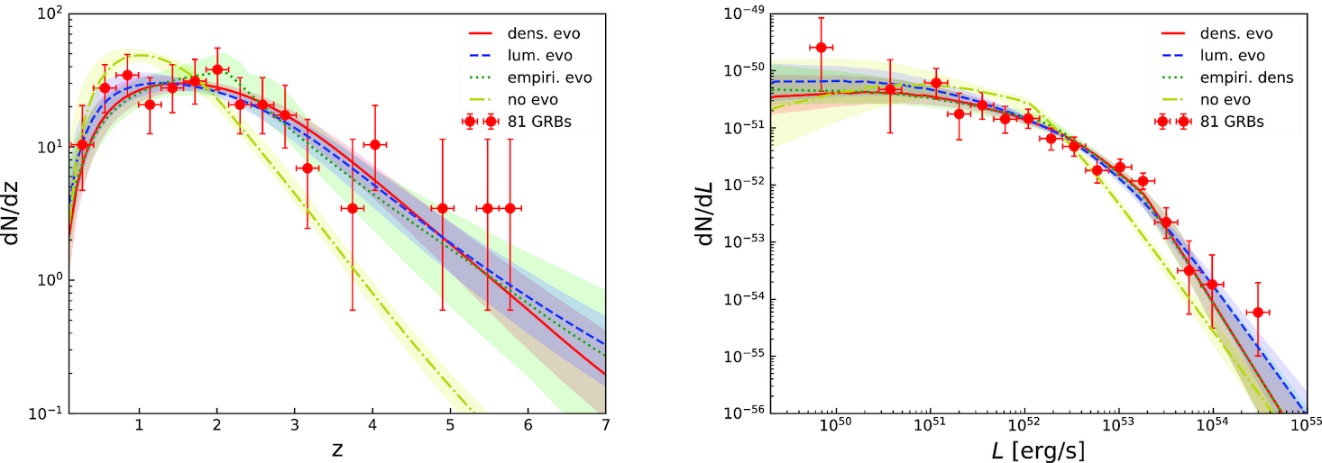The Luminosity Function and Formation Rate of A Complete Sample of Long GRBs
The luminosity function and formation rate of gamma-ray bursts (GRBs) are two key properties to understand the nature of GRBs and to determine their progenitors. Several models have been proposed to account for these two properties: no evolution model, density evolution model, luminosity evolution model, and empirical density model. The authors considered a complete sample of long GRBs and adopted a MCMC method to estimate the parameters of these models. This is the first time this method was applied to a well-defined sample of GRBs that is complete in redshift.

By LAN Guangxuan
They confirmed that the expectation from the no evolution model does not provide a good representation of the observed luminosity and redshift distributions of the complete GRB sample. A strong redshift evolution in luminosity (with an evolution index of ) or in density () is needed in order to reproduce the observations well. And in the empirical density model, the GRB formation rate rises like for and is proportional to for . The local formation rate of GRBs is. See more details in MNRAS.